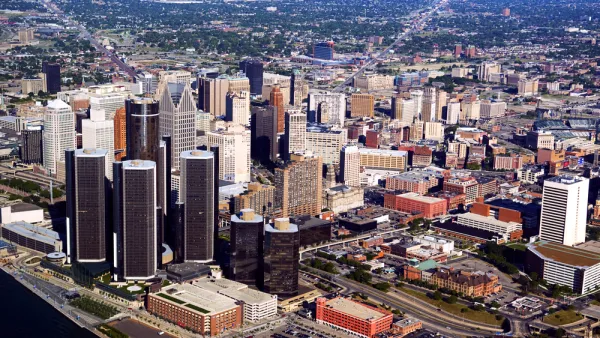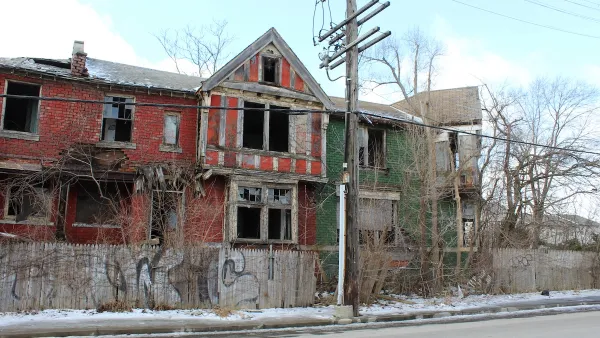Spencer Fleury looks into the contradictory nature of his hometown Detroit; as the city commonly praised for its car culture is now being crushed by it.
Detroit became the car capital of the world by way of easy accessibility to raw materials, close proximity to water and rail transportation, and the historically fortunate location of Henry Ford's birthplace. And its built environment reflects its association with the automobile. "Detroit is the poster child for low-density urban sprawl. With nice, wide roads and endless parking, Detroit has physically changed itself over the years to accommodate the needs of the vehicles it produces." Fleury observes that this environment fails to offer the benefits that urban density can provide, and that the city is suffering from the repercussions of its sprawl-based development patterns.
"The entire metro Detroit region is having a lot of difficulty attracting educated, creative talent from the outside. What firms in the area are finding is that it isn't Detroit's, um, gritty reputation that's scaring people off. No, it's the sprawl. (And really, do read that link.) The inconvenience and ugliness of it all is preventing – or at the very least noticeably hindering – the city's rebirth."
Fleury, however, is hopeful that the emptying out of large sections of the city may provide an opportunity to retrofit its fabric to accommodate transit, cycling, and walkability.
FULL STORY: The irony of Detroit

National Parks Layoffs Will Cause Communities to Lose Billions
Thousands of essential park workers were laid off this week, just before the busy spring break season.

Retro-silient?: America’s First “Eco-burb,” The Woodlands Turns 50
A master-planned community north of Houston offers lessons on green infrastructure and resilient design, but falls short of its founder’s lofty affordability and walkability goals.

Delivering for America Plan Will Downgrade Mail Service in at Least 49.5 Percent of Zip Codes
Republican and Democrat lawmakers criticize the plan for its disproportionate negative impact on rural communities.

Test News Post 1
This is a summary

Test News Headline 46
Test for the image on the front page.

Balancing Bombs and Butterflies: How the National Guard Protects a Rare Species
The National Guard at Fort Indiantown Gap uses GIS technology and land management strategies to balance military training with conservation efforts, ensuring the survival of the rare eastern regal fritillary butterfly.
Urban Design for Planners 1: Software Tools
This six-course series explores essential urban design concepts using open source software and equips planners with the tools they need to participate fully in the urban design process.
Planning for Universal Design
Learn the tools for implementing Universal Design in planning regulations.
EMC Planning Group, Inc.
Planetizen
Planetizen
Mpact (formerly Rail~Volution)
Great Falls Development Authority, Inc.
HUDs Office of Policy Development and Research
NYU Wagner Graduate School of Public Service





























